When Fleet News profiled the Eric Wright Group two years ago, its group fleet manager Steve Openshaw had driven his BMW i3 range-extender electric vehicle (EV) 26,000 miles, using just 19 litres of petrol.
Those figures now stand at 48,000 miles and 30 litres. “Most of that fuel has probably been used by the engine running through a main-tenance cycle which it needs to do from time to time,” says Openshaw, who ran an Ampera range-extender for more than 70,000 miles before taking on his i3.
“What I’ve done with the i3, and the Ampera before that, shows that you can quite easily live with a 120-to-130-mile vehicle as there are always options for longer trips.”
Leading by example was key to winning early acceptance for EV technology from his drivers.
This acceptance has snowballed and the company is now on track to smash its ambition of having 60% of the cars it leases as hybrid, plug-in hybrid or pure EV by 2025.
Around 12 months ago, 20% of its cars fell into this category, including two pure EVs in March when the construction company was named Fleet of the Year (under 1,000 vehicles) in the 2020 Fleet News Awards. It now has 32 battery electric vehicles (BEVs), 20 plug-in hybrids and 11 hybrids.
“I think we’ll be at 60% electric vehicles by the end of next year; 96% of our current order bank is electric,” says Openshaw.
As well as the increasing acceptance of the technology, the growing availability and competitive wholelife costs of EVs, as well as favourable benefit-in-kind (BIK) tax rates, is fuelling the surge in orders.
The 0% BIK rate for pure EVs this year, rising to 1% in 2021/22 and 2% after that, has also helped overcome a traditional obstacle to EV uptake.
“As soon as the BIK rate dropped, range anxiety disappeared,” jokes Openshaw. “The newer EVs have ranges of 200 miles and upwards, and you don’t want to be driving 200 miles in one go anyway.
“If you are, it’s against policy. In four hours’ driving, you need to take a break of half-an-hour to an hour, so, in that time, you can charge up.
“I say to our drivers that they don’t have to charge up fully at a public charge point if they don’t need to. They don’t have to sit there for an hour until the battery is full. They can sit there for 15 minutes or until they’ve got enough charge to get home.
“I tell them not to charge it up completely because one, that’s expensive and two, why would you want to sit there when you can plug it in at home for half price? If they just need the 15 to 30 miles, then put 50 miles in. They’ll have plenty to do the journey. It’s just getting that mentality over to people.”
BEVs available for all car grades
Under Eric Wright Group’s wholelife cost-based choice list, employees who are eligible for a company car can select a BEV regardless of their grade.
“We initially tried to offer a hybrid or a plug-in hybrid in every grade, and we got that,” says Openshaw. “The Peugeot e-208 got into the second-lowest grade, and then MG let us offer a BEV in the lowest grade.
“So where a driver would otherwise be getting a Volkswagen Polo or a Ford Fiesta, they can get a pure electric car with a range of 200 miles.”
The improved choice list and BIK rates have also led to a resurgence in cash allowance drivers wanting to rejoin the company car scheme and choose an EV.
Vans pose a different challenge. Eric Wright Group has trialled electric vans, most recently the Maxus 3, but in the past they have not been suitable to add to the fleet.
“The shift to electric vans at the moment is with the last-mile delivery vehicles, which is not what we do,” says Openshaw.
“They will work brilliantly for parcel delivery people because they’ve got depots where they can park and charge up. They’re going to be operating in congestion zones where it will cost them if they don’t go electric.
“We’re a bit more rural, working away from town centres, so it’s not that big an impact at the minute. Also, the technology is not there at the moment for what we want to do.”
However, he says the company will look to get some electric vans in at the next change cycle, probably starting with smaller Peugeot Expert-sized vans.
While company car drivers have low BIK rates to help them overcome any reservations about EVs, this does not apply to vans.
Instead, Openshaw will look to get an EV champion in each of the business’s areas and work with them on tuition and guidance.
Another obstacle for the wider uptake of EVs is the charging infrastructure. So far, Eric Wright Group has installed five charge points at its headquarters in Bamber Bridge, near Preston, with plans to increase this to 25 in the next 18 months.
It also plans to put an additional 30 charge points across its property portfolio.
Improved charging infrastructure
The improving public charging infrastructure has also allowed Eric Wright Group to loosen restrictions on which company car drivers are able to opt for an electric car.
Originally, drivers who could park their cars off-road and had access to a charge point could choose one.
“Now we say ‘have you got access to a charge point elsewhere? Do you live close to a service station with a rapid charger, for example?’,” says Openshaw.
“Drivers can charge EVs at work, but that’s not guaranteed and we don’t pay for charge points at homes, but the drivers are coming up with other places they can charge, such as at supermarkets.
“The main thing we talk to them about is making sure they know they’ve got to charge their car.
“If, in six months’ time, they say ‘I can’t do it’, they can’t hand the car back and get a petrol or a diesel one, they’re stuck with it, so they need to make sure that they’re aware of what they want to do.”
Charging commercial vehicles (CVs) presents a different challenge as the vans are taken home at night. Openshaw says home charge points will probably be supplied, but this has highlighted another issue.
“The main objection has been ‘I’ve got a car and my wife has got a car, and we can only put two vehicles on the drive. Why would I put a car on the road so I can put my van on the drive?’,” he says.
“It’s understandable. Why would they park their car out there where it could get damaged by people or traffic going past when they could just leave the van there?”
The drive to electrify its fleet is an important part of Eric Wright Group’s overall ambitions to reduce emissions.
Last year the group received the Gold Standard Award from Carbon Saver for successfully reducing its carbon footprint for the 11th consecutive year.
In a further move to minimise its environmental impact, it has also switched energy provider to a 100% renewable provision through Haven Power.
Away from electrification, Openshaw lists one of his biggest achievements over the past couple of years as fitting telematics with dashcams to the entire commercial fleet.
These are linked to a new mileage capture system and fuel cards to enable Openshaw to gather more accurate data to manage the fleet.
Eric Wright Group initially introduced telematics with dashcams on the CVs in one part of the fleet towards the end of 2017 and, following issues with the original supplier, switched to a new one and completed the roll-out in 2019.
Openshaw says the original prompt for adopting the technology was the number of incidents its drivers were having where it was somebody’s word against another.
“We would have no independent witness, but, with a dashcam, we do. People were against it thinking it was a spy in the cab. I say not. It will prove whether you’re guilty of something or it might equally prove you’re innocent. A dashcam will prove that, but at the moment I can’t.
“One of our most vocal drivers had an incident and the dashcam helped him prove it was exactly how he said it was – it wasn’t his fault – and he went away, telling everybody the dashcams were the best thing since sliced bread.
“That took a lot of the issues away.”
Openshaw is a firm believer in the power of word of mouth. As well as looking to recruit EV champions for vans, he has a number of safety champions across the fleet to highlight and improve risk management.
He has also set up a steering group to look at how to use the telematics data to reduce incidents.
Chaired by the company’s insurance broker, the group also consists of operation directors and senior and junior managers.
“The insurance broker has got a wealth of knowledge on how to put information on collisions across to different businesses, guiding them on how to reduce accidents,”says Openshaw.
“The aim is this committee will win buy-in from the top down first and then they will take it out to get local drivers involved.”
Telematics data is also used to identify collision trends to highlight areas for training, as well as potential efficiency improvements such as reducing fuel use through cutting idling.
“We can see that vans have arrived on site, but they’ve been sitting there for an hour with their engines on so the driver can keep warm,” says Openshaw.
“Why are they doing that? Because there’s no welfare on site. Should there be? We can use telematics to help us with things like that.”
Openshaw joined the group to oversee the plant and transport department 14-15 years ago and has been in his current more strategic role for around four years.
Together with group fleet controller of 20 years Sue McGuigan, he manages most functions in-house.
All vehicles are leased on four-year terms, with service and maintenance included. “Other than that, we don’t outsource a lot. Accident management is managed by us, but in conjunction with our insurer,” he says.
“There’s so much legislation and regulation involved in running a fleet, and you can’t outsource your responsibility.
“You’ve got to have somebody that knows what they’re on about and can advise the directors.
“It’s also vital to manage suppliers. There might an error through the leasing company not having a proper discount code loaded or there’s something missing.
“If that’s not checked by a professional fleet team, it could cost you thousands.
“It’s very easy to outsource things to other companies and say ‘let them take care of it’, but they won’t.
“They’ll look after you but they are also taking care of themselves, so an investment in a professional fleet team will pay for itself.”
Openshaw on … pandemic’s impacts on work practices
 The Covid-19 pandemic has led to a number of changes in Eric Wright Group’s working practices, covering both employees out in the field and office staff.
The Covid-19 pandemic has led to a number of changes in Eric Wright Group’s working practices, covering both employees out in the field and office staff.
For Steve Openshaw and Sue McGuigan, this has meant working from home.
“We feel like we’ve been divorced,” jokes Openshaw. “We’ve been working side-by-side for 14 or 15 years and these past 12 months have been totally different.
“We probably spend two hours a day on MS Teams or on the phone, and there are always emails flying backwards and forwards, but it’s not like having an interaction with somebody in person.”
Briefings with drivers who are already with the business and are taking on new vehicles are now done through emails and online, but meetings with new starters is still done face-to-face, although precautions such as social distancing and mask-wearing are taken.
The company has suspended its in-person driver training programme and replaced this with online modules during the pandemic.
It has also ensured employees work in the same teams to minimise mixing with more people than necessary, while it has also had to sometimes get additional vehicles to reduce the number of workers travelling together.
The mileage covered by the organisation’s vans has remained fairly static during the pandemic, but the distance travelled by company cars has “dropped dramatically”, says Openshaw.
“We’re working with our fleet provider on rewriting leases and how best to use our pool mileage,” he adds.

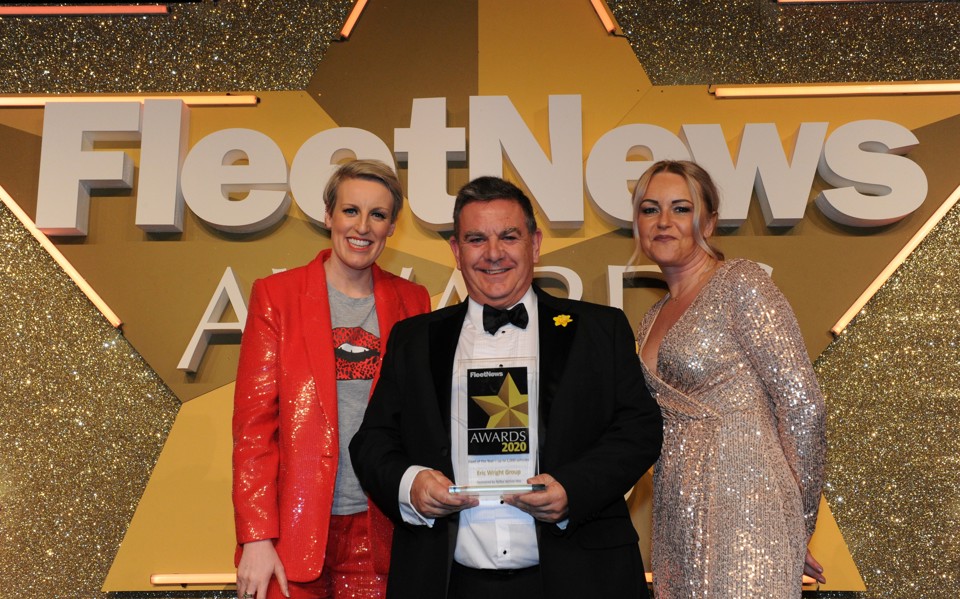




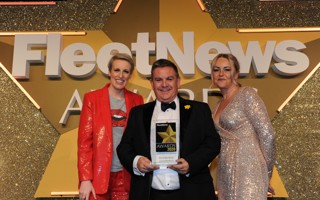
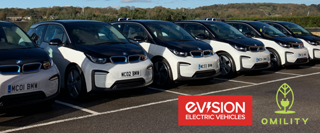
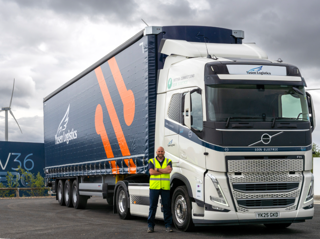











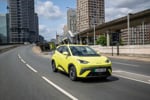


Login to comment
Comments
No comments have been made yet.